By any measure, the petrochemical refinery slated for construction on the banks of the Columbia River in southwest Washington is a giant. Designed to convert large quantities of natural gas into methanol, the facility would ship tankers full of the product to China to be used for making plastics.
Although the facility proposed for Kalama is only about half the size of the gargantuan scheme that recently collapsed in Tacoma, the scale of the project’s ambitions are still staggering. In order to make clear some of the facts about the project, Sightline is publishing a graphic accounting of the proposed Kalama Methanol Refinery.
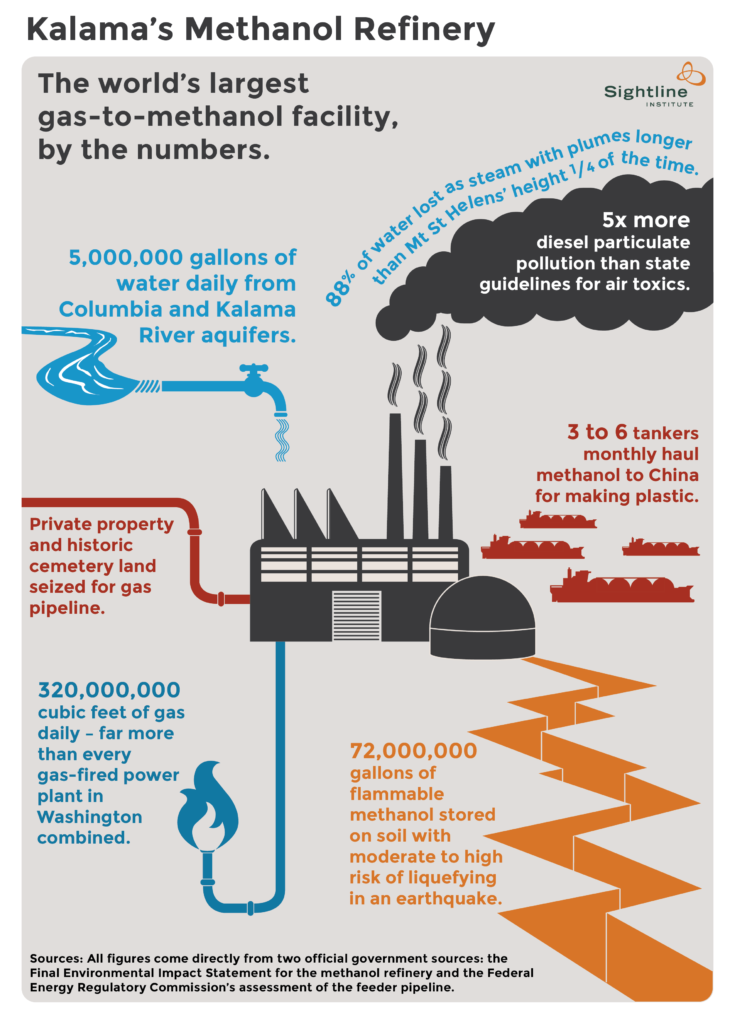
Below, you can find a full description of our sources and methodology.
The proposed facility at Kalama would be the largest methanol-producing facility in the world. According official project documents, the proposed refinery would produce up to 10,000 metric tons of methanol per day, or 3.6 million metric tons per year. The three largest plants already in existence appear to be Iran’s Kaveh mega methanol project (a two-million-ton-per-year gas-to-methanol plant) and a pair of facilities in Trinidad and Tobago: Methanol Holdings (Trinidad) Limited’s M5000 plant (1.89 million metric tons per year) and Methanex’s Atlas plant (1.7 million metric tons annually). As of 2014, Connell Group of China was apparently planning to build a two-plant complex in Texas or Louisiana that would be even bigger than Kalama’s (with each unit having the capacity to produce 3.6 million metric tons a year), but there is little current information about this project and it is not now operational.
Steam plumes would be longer than Mt St Helens’ height 1/4 of the time. As shown in Table 16 on page 60 of Appendix D to the Final Environmental Impact Statement, if the plant uses “ultra low emission” (ULE) technology, the steam plumes would 25 percent of the time stretch to 3,000 meters—that’s 9,842 feet compared to Mt St Helens, which stands 8,366 feet and is visible from hundreds of miles away. (If the plant uses “combined reforming” (CR) technology, an alternative means of producing methanol, it will produce steam plumes at least 4,000 meters long an estimated 34 percent of the time—that’s 13,123 feet compared to Mount Hood, which rises 11,250 feet high. And 12 percent of the time, the plumes would stretch 6,000 meters, nearly at long as Alaska’s Mount Denali is tall.)
Toxic air pollution with five times more diesel particulate pollution than Washington guidelines would issue from the Kalama methanol refinery. That’s according to figures in the Final Environmental Impact Statement, Table 4-6, where you can also find information about the plant’s other hazardous air pollution, including ammonia, carbon monoxide, nitrogen dioxide, and more.
Three to six tankers per month will carry the refinery’s petrochemical product down the Columbia River and across the bar at Astoria en route to China. Those vessel numbers are calculated from the annual figures given on page 2-14 of the project’s Final Environmental Impact Statement.
The risks of building on ground that has a moderate to high risk of liquefying in an earthquake can be found on page 3-7 of the Final Environmental Impact Statement. In this section, we also learn that:
Earthquake-induced settlement and lateral spreading due to liquefaction could affect structures at the project and result in related injury or death to personnel…. Lateral spreading would be most likely to affect the project elements located close to the river, such as the marine terminal, pump station, fire suppression water storage and pumps, infiltration pond, flush pond, and Ranney well.

Original Sightline Institute graphic, available under our free use policy.
The Kalama methanol refinery would consume 320 million cubic feet of natural gas per day, according to page 2 of the Federal Energy Regulatory Commission’s environmental assessment of the new natural gas pipeline that would be required to supply the refinery. (As shown in Chapter 7 of the Final Environmental Impact Statement, 290 million cubic feet of natural gas would be used daily to create methanol with the balance going to stoke an onsite gas-fired power plant.) For context, that’s more natural gas than is used by every gas-fired power plant in Washington, combined. It’s also more than is used by every industrial site in the state or every home in the state; it’s about twice as much as is used by every commercial business.
The feeder pipeline would require seizing private land, including an easement across a historic cemetery. The dispute with the Mount Pleasant Cemetery commissioners has been reported by the Longview Daily News, among other media sources.
The refinery would use 5 million gallons of water per day, according to page 5-19 in the Final Environmental Impact Statement if the operators use ULE technology. It would use “slightly less” if the plant operators opt for conventional technology. That’s an amount roughly equivalent to the consumption of 96,000 residents of Portland, Oregon, where officials estimate that a typical city dweller uses 52 gallons per day.
Thanks to Dan Serres and Jasmine Zimmer-Stucky of Columbia Riverkeeper for contributing research, to Tarika Powell for editorial review, and to Devin Porter at Goodmeasures.biz for designing the graphics.


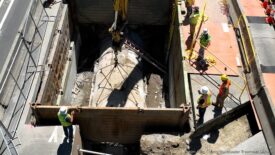
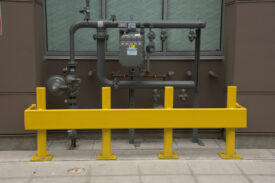
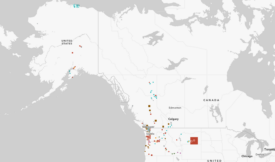
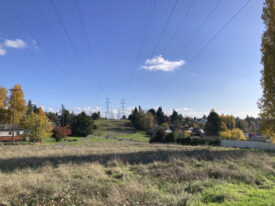
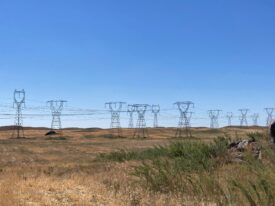

Heather
Love this graphic but what about the electricity usage? It’s HUGE too!
Ann and Doug
My husband and I feel that the risk of catastrophic damage to the Columbia River and surrounding areas, is not worth the gain (which is financial to those promoting this venture). We must be ever so much more vigilant about our environment with the removals of constraints by this administration.
The comment about the consumer not being responsible is balony. Don’t buy plastics – we can live without most of it. Don’t by acrylics. If we don’t buy, they don’t send. Plastics are filling up our oceans already.
Kent Echler
Is it true that there are two phases to the proposed Kalama methanol plant? When phase 1 is completed it will have a capacity of 1.8 million tons of methanol per year and cost about 1.8 billion USD. This is similar to the cost of other greenfield new build methanol plants.
Terry
Gets off on completely the wrong foot by calling this a refinery, obviously to intentionally stir fear. Methanol isn’t produced in a refinery, it is synthesized and distilled and consequently produces few ‘bad’ byproducts. It takes our abundant reserves of natural gas and makes something useful and valuable out them. Methanol production is a relatively clean process when compared to oil refining. Natural gas isn’t dirty wrt impurities and whilst, yes, the process is carbon intensive and energy intensive, it produces a product that is the feedstock for an abundance of downstream plastics. Whilst toxic (of course it is!) and flammable, it is also biodegradable, so much, much cleaner than the diesel of gasoline you put in your car every day (and guess what, it can be used as replacement fuel for these products, if only the US would take China’s lead – and it burns MUCH more clearly with little NOX or SOX) I bet you’re all typing away on your home computer, cell phone, eating dinner of your laminate tables – well, these products wouldn’t exist (at least not at an affordable price) without the methanol industry. If it’s simply a case of NIMBY, just say so……but if you all buy plastic products, you really are part of the problem….
Eric de Place
Methanol is distilled in a “refining column,” which is perhaps why the project backers of these plants originally referred to their projects as refineries. They’ve since scrubbed that word from their materials, presumably to make it sound less nasty.
With respect to the alleged environmental benefits of methanol, please see Sightline’s in-depth accounting based on the academic literature.
Claudia
Terry, creating things that are less toxic and less disposable is a step in the right direction. And if that means they’ll cost more, well that’s not necessarily a bad thing for it might stem so much ridiculous waste. We have to stop polluting the planet if we have a shred of morality and responsibility towards our fellow beings and future generations. However, blaming consumers for the dirty fossil industry is like blaming the soldier for the war.
Cynthia Svensson
No one should have a methanol production plant in his backyard. If we truly need more plastic sources, and that is debatable, the plant should be built as close as possible to the natural gas source and the methanol should be processed into plastic at the same remote location away from populated areas. Piping all that extra natural gas is dangerous and unnecessary. Making and storing vast amounts of a flammable, toxic chemical on the banks of the greatest river of the West in a populated area is unnecessary and courting world class disaster. Making plastic near the natural gas source would keep many more jobs at home, where they belong. People on other continents need to use their own resources, dirty their own environment, and take their own risks. Keep American jobs in America!
Don Steinke
Climate change transcends all these things, and that is why I’m in the fight to oppose this project.
The EPA has only recently discovered that their models for estimating fugitive emissions from drilling operations and pipelines were 30% too low. The spike coincides with the development of fracking technology.
I believe that most of the gas needed to supply the Kalama methanol refinery will come from the Western Canada Sedimentary Basin straddling northern BC and Alberta. They already have 12,000 frack wells there.
John Erickson
Are the fugitive emissions from the methane sources included in the EIS?
Sam Lockwood
Follow the money trail. It starts in China; a small amount ends up in Kalama; and probably considerably more will end up in the hands of workers in the fracking fields. But the lions share of it will end up in the pockets of petrochem executives, their shareholders, and of course the methanol plant financiers themselves.
This plant will instantly double the consumption of natural gas in the pacific northwest, this added demand pitting homeowners in the entire region into a bidding war against foreign buyers and quite likely causing a huge rise in the consumer cost of natural gas, which a large number of residents in our state absolutely depend upon to economically heat their homes.
While the risk of explosion has not been fully quantified, some estimates predict an unprecedented level of destruction including a 2 mile radius fireball, total loss of property within this zone, and deaths and injuries ranging from the hundreds and possibly into the thousands. Buildings within a 5 mile radius will suffer extensive damage, including broken windows and collapsed roofs due to the shock wave.
When assessing the potential for disaster, it is well to remember that this technology is untested, and that this was also the situation with the Cameron Glass plant in Kalama, which was shut down before it had even produced a single wine bottle due to a massive molten glass leak on initial startup, effectively putting what had previously been a financially prosperous multi-million-dollar company out of business.
While the plant is expected to produce around 90 full time jobs, the project will also consume many acres of port property. To contrast, the McMenamins facility that is currently under construction will consume only a few acres, is projected to employ between 75 and 100 people, and will bring many customers and tourists into the area, who will also shop at and support other local businesses.
For these reasons, and because the financial rewards are simply too small as compared to the risks I am against the proposed methanol plant.
Samuel V. Lockwood
Kalama, Wa
mike
We need this project for the jobs and improving our economy. Enough with this “saving the environment” every time a project is proposed. Maybe you should go into the cities and see the homeless who can’t find these jobs. And ask yourself if saving the environment is worth the human pain and suffering of being homeless? Or do you intend to put all Americans on food stamp and welfare programs? Then who is going to pay for them?
The service jobs brought in by other businesses bring only minimum wage jobs. Hardly enough to support families.
Besides all the propaganda put out by the EPA is mostly worthless. The EPA is about how much money the Feds can steal from the productive citizens of our country. Certainly not about protection of the environment.
Diane L. Dick
The Kalama methanol refinery will affect the health and well-being in one way or another of everyone in Cowlitz County, the state, and the globe if you look at the health impacts from air pollution, water pollution, fugitive methane from pipelines, fracking, global warming. It will decrease property values in the immediate area. It will likely drive away other cleaner businesses. There are economic values that can be associated with all those concerns.
By some definitions the homeless population in Cowlitz County is approximately one-half of one percent of the total population of about 102,000. There are over 100,000 people in the “local” area that have the skills to fill the 192 permanent jobs the refinery describes in the FEIS. As most methanol refineries require job applicants to have experience in the industry I doubt there are many if any homeless in Cowlitz County who could successfully compete for a job there. The refinery might produce some secondary service jobs that you disparage. It may also drive jobs and people away from the county. There are ways to address homelessness but a methanol refinery isn’t one of them.
Kim maun
Mike, this project will create many short-term jobs and relatively few long-term ones. We need to stop looking at short-term fixes for unemployment, and we certainly need to protect our land, water, and air. Everyone is affected by the irreversible damage to the environment.
Kevin Kane
How does a natural gas to methanol plant lead to a 45 percent reduction in carbon outputs in the next twelve years ? We need to leave 80 percent of fossil fuel reserves in the ground to avoid catastrophic climate change. When do we begin to make the needed changes ? This plant will lock us into using natural gas as it becomes an asset that requires a return on the costs of development. We need a plan to get the needed carbon reductions, in the absence of a plan there can be no methyl alcohol plant. Does this fit in our overall carbon budget ? If this is allowed where else are we willing to reduce ? We have a sick idea that if someone has a plan to make money or needs a job that is the priority. This is killing the planet. If you are concerned about construction jobs then get involved in promoting clean energy development and the associated jobs. I do believe in individual responsibility, it is time to stop buying and using plastic crap you do not need.
Dennis
When we moved to Kalama earlier this year, we had no idea what was going on regarding this methanol travesty, but when I came upon the “No Methanol” lawn signs during my daily walks around town, I needed to learn more. I have joined the local protest group and agreed to take over content updates on the Clean Air Kalama website.
I have also started a Blog to try and express my own personal thoughts on this looming disaster,
Dennis
My Blog URL did not come out correctly in my previous post, trying again.